Unit 3 Topic 3 What would you like to drink? Section B (共34张PPT,内嵌音频)2023-2024学年七年级英语上册精品课件(仁爱版)
文档属性
| 名称 | Unit 3 Topic 3 What would you like to drink? Section B (共34张PPT,内嵌音频)2023-2024学年七年级英语上册精品课件(仁爱版) |  | |
| 格式 | pptx | ||
| 文件大小 | 5.8MB | ||
| 资源类型 | 教案 | ||
| 版本资源 | 仁爱科普版 | ||
| 科目 | 英语 | ||
| 更新时间 | 2023-11-28 19:06:15 | ||
图片预览

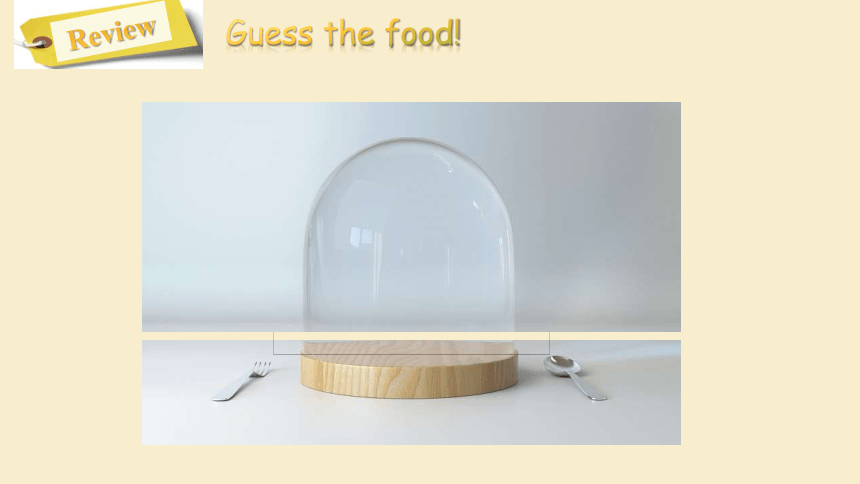
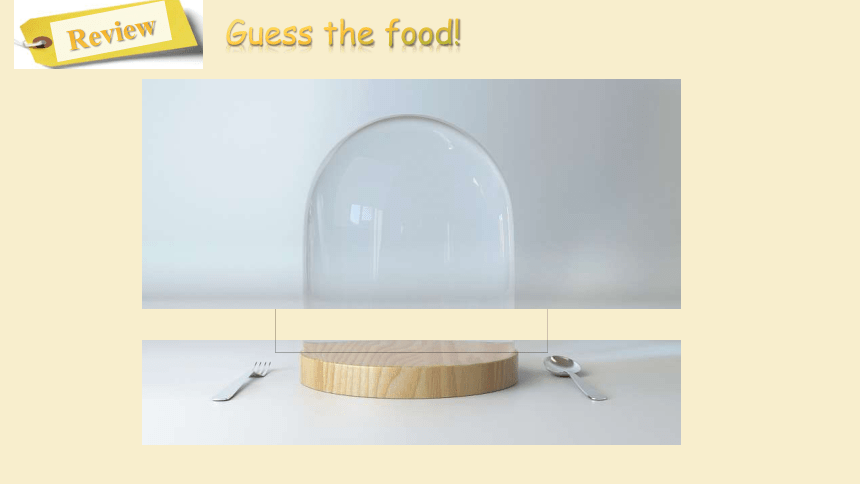
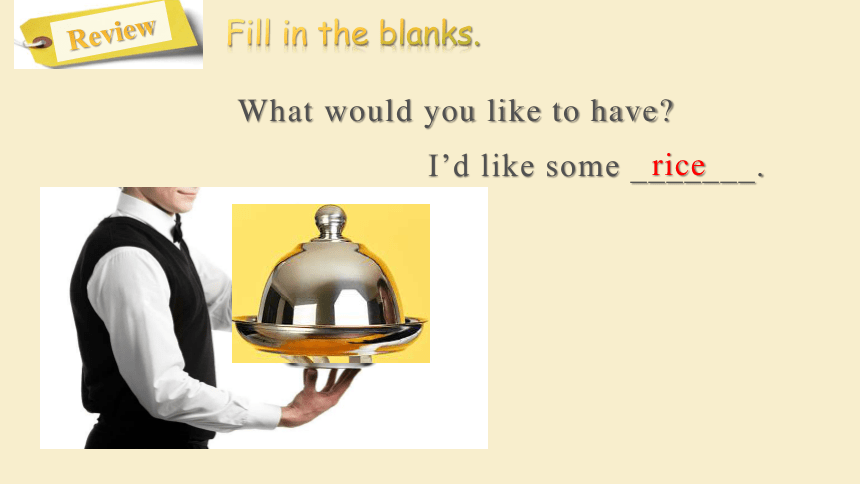
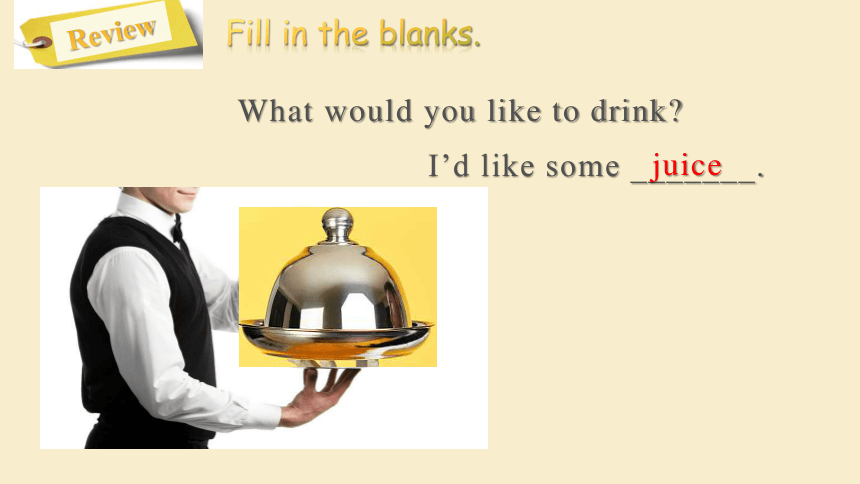

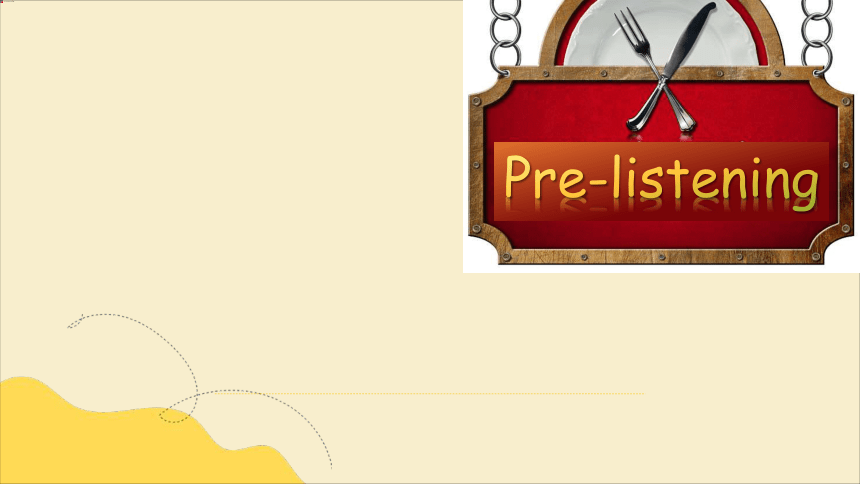
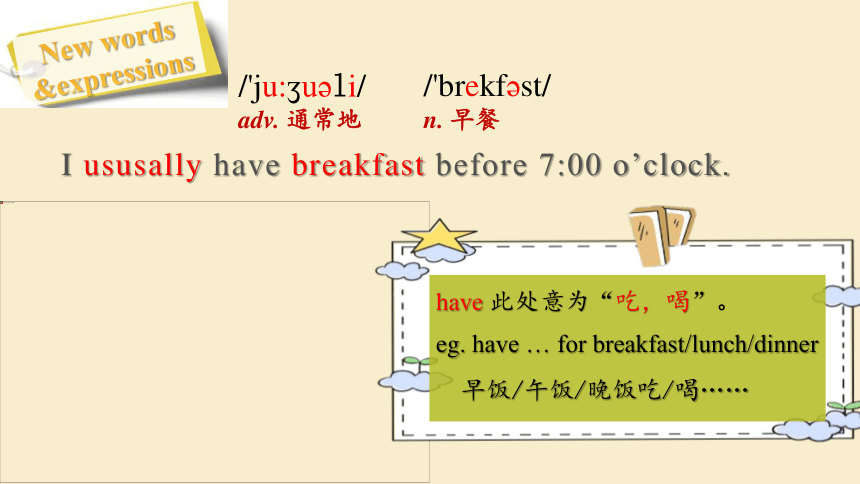
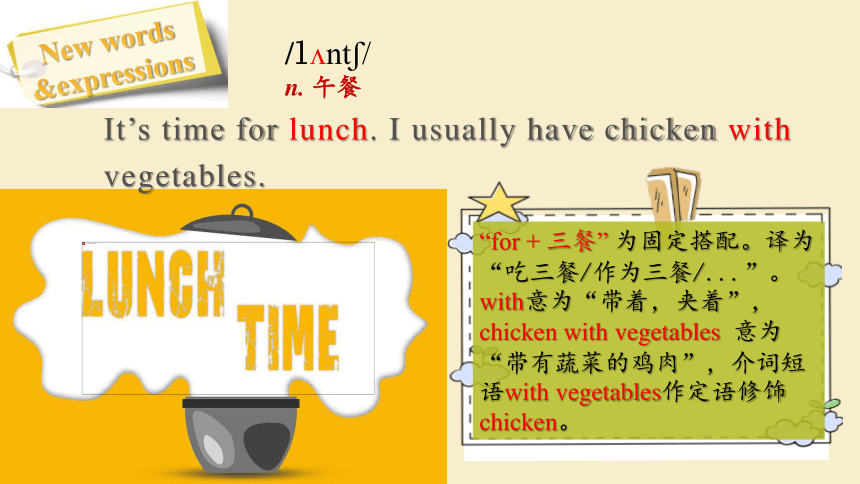
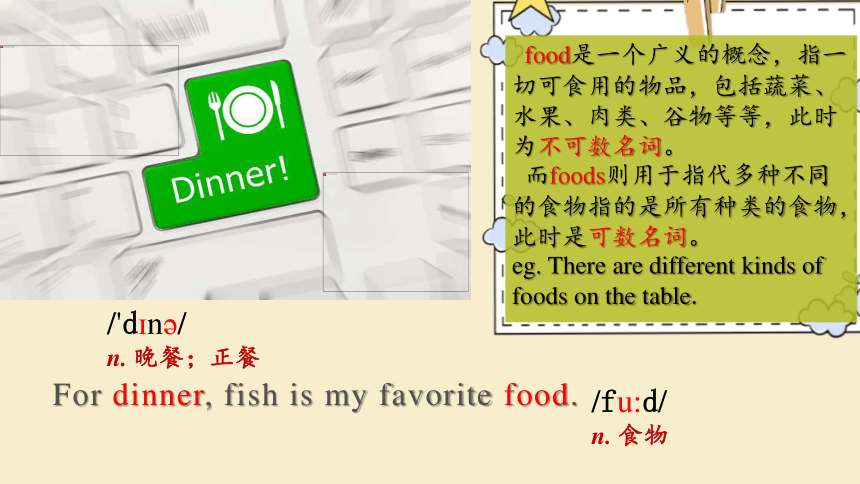
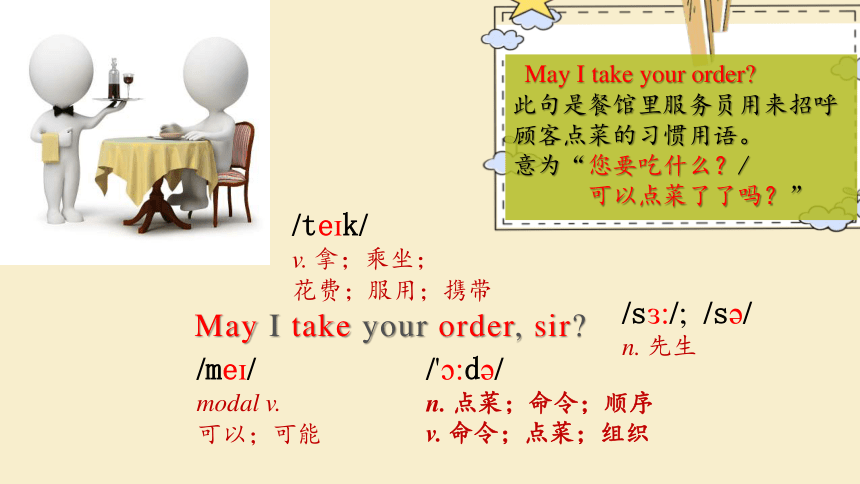
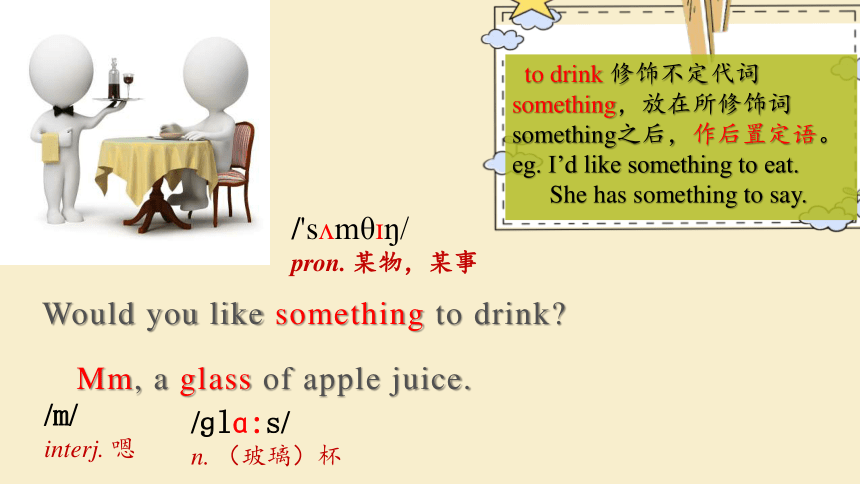
文档简介
(共34张PPT)
Unit 3 Topic 3
What would you like to drink
Section B
Review
Guess the food!
fish
Review
Guess the food!
chicken
Review
Fill in the blanks.
What would you like to have
I’d like some _______.
rice
Review
Fill in the blanks.
What would you like to drink
I’d like some _______.
juice
Review
Fill in the blanks.
What would you like to drink
I’d like some _______.
eggs
Pre-listening
New words
&expressions
I ususally have breakfast before 7:00 o’clock.
/'ju: u li/
adv. 通常地
/'brekf st/
n. 早餐
have 此处意为“吃,喝”。
eg. have … for breakfast/lunch/dinner
早饭/午饭/晚饭吃/喝……
New words
&expressions
/l nt /
n. 午餐
“for + 三餐” 为固定搭配。译为“吃三餐/作为三餐/...”。
with意为“带着,夹着”,
chicken with vegetables 意为“带有蔬菜的鸡肉”,介词短语with vegetables作定语修饰chicken。
It’s time for lunch. I usually have chicken with vegetables.
/'d n /
n. 晚餐;正餐
food是一个广义的概念,指一切可食用的物品,包括蔬菜、水果、肉类、谷物等等,此时为不可数名词。
而foods则用于指代多种不同的食物指的是所有种类的食物,此时是可数名词。
eg. There are different kinds of foods on the table.
For dinner, fish is my favorite food.
/fu:d/
n. 食物
/' :d /
n. 点菜;命令;顺序
v. 命令;点菜;组织
May I take your order
此句是餐馆里服务员用来招呼顾客点菜的习惯用语。
意为“您要吃什么?/
可以点菜了了吗?”
May I take your order, sir
/me /
modal v.
可以;可能
/te k/
v. 拿;乘坐;
花费;服用;携带
/s :/; /s /
n. 先生
/'s mθ /
pron. 某物,某事
to drink 修饰不定代词something,放在所修饰词something之后,作后置定语。
eg. I’d like something to eat.
She has something to say.
Would you like something to drink
/ɡlɑ:s/
n. (玻璃)杯
Mm, a glass of apple juice.
/m/
interj. 嗯
What do you usually have for breakfarst
I usually have an _____ and a glass of _____
for breakfast.
egg
milk
What do you usually have for lunch
I usually have some _____ and _____
for lunch.
rice
fish
What do you usually have for dinner
I usually have different kinds of _____ (food)
for dinner.
foods
different kinds of
不同种类的
While-listening
What does Michael usually have for breakfast/lunch/dinner
Let’s listen!
Listen and match
1b
Listen to 1a and match the following pictures with each meal.
Breakfast
Lunch
Dinner
Read and fill
1c
Read 1a and fill in the blanks. Then report it to your class.
Michael usually has ______ and _______ for breakfast. And for lunch, he would like ________ with __________ and some rice. ________ is his favorite Chinese food and he has it for dinner. What do you usually have for breakfast, lunch and dinner
milk
bread
chicken
vegetables
Jiaozi
Kangkang: What do you usually have for breakfast, Michael
Michael: I usually have milk and bread for breakfast.
Kangkang: What about lunch
Michael: I usually have chicken with vegetables and some rice.
Kangkang: And dinner
Michael: Jiaozi. It's my favorite food. I like Chinese food very much.
Look, listen and say.
1a
And dinner 这是一个交际对话中根据上文内容产生的省略问句。此句的完全形式是:
And what do you usually have for dinner
Language points
1. What do you usually have for breakfast, Michael
迈克尔,早餐你通常吃什么?
考点:
(1)for breakfast 意为“就早餐而言”,for在此处作介词,表示“对于,就......而言”,后面接名词或代词。在英语中,表达一日三餐的名词为breakfast, lunch, dinner, 一般前面无冠词。若三餐前有修饰词,前面通常用不定冠词a/an。
eg. I like rice for dinner. I have breakfast at home.
After a big breakfast, she goes to school.
(2)如果说明三餐吃的东西,结构为:
have sth. for breakfast/lunch/dinner。
练习: She has some rice ____ _______ (午餐).
for lunch
Post-listening
Work in groups.
2
Survey your group members about what they usually have for breakfast, lunch and dinner. Then make a short report.
Name Item Breakfast Lunch Dinner
Food
Drink
Food
Drink
A: Hello!What do you usually have for breakfast/lunch/dinner
B: I usually have ...
Report
You may begin like this:
This is my friend, Li Hua .
He/She usually has … for breakfast.
And …
Look and fill
3a
Look at the picture and complete the conversation.
Waitress: May I take your order, sir
Mr. Brown: ________ with vegetable and
_______, please.
Waitress: Would you like something to
drink
Mr. Brown: Yes. A glass of ___________,
please.
Waitress: OK. Thank you.
Fish
rice
apple juice
something to drink 意为“喝的东西”,to drink修饰不定代词something,放在所修饰词something之后,作后置定语。
eg. I’d like something to eat.
She has something to say.
Language points
2. May I take your order, sir 先生,您要吃什么?/可以点菜了吗?
考点:
(1)take one’s order 意为“记下顾客点的饭菜”。
eg. —May I take your order
—Chicken and rice, please.
此处order作名词,意为“所点的饮品菜肴”。它也可以用作动词,意为“点(酒菜)等”。
eg. He orders some chichen and vegetables.
(2)sir 意为“先生,阁下”,该词是对不相识的男士、男上司、男性长辈的尊称,相当于Mr.。但Mr.必须与姓氏连用,并且首字母要大写,而sir可以单独使用。如对方是女性,则用madam。
eg. Yes, Sir. / Mr. Wang
Language points
3. A glass of apple juice, please. 请来一杯苹果汁。
考点:
a glass of... 意为“一杯......”,juice意为“果汁,饮料”,是不可数名词,其前不能直接与具体的数词、不定冠词a/an连用,也没有复数形式,但可与some/any等词连用。如果想表示不可数名词确切的量,常用“数词+表示量的名词+of+不可数名词”,如果数词大于1,只能把表示量的名词变为复数。
eg. Would you like a glass of apple juice
I’d like two bottles of water.
有时可数名词也可以用这种形式。
练习: __________ (一盒) eggs ___________ (两盒)eggs
a box of
two boxes of
Act it out
3b
Complete the conversation with correct sentences.
Then act it out.
A. Would you like some vegetables
B. OK. Something to drink C. May I take your order
D. Oh ... All right. E. What do you usually have for lunch
Rabbit: _______________________
Monkey: Let me see. Mm ...
Rabbit: _______________________
Monkey: No, thanks.
Rabbit: _______________________
Monkey: Bananas. Well, I’d like seven bananas.
Rabbit: _______________________
Monkey: Banana juice, please.
Rabbit: _______________________
C
A
E
B
D
Language points
4. Let me see. 让我看看。
考点:
同义句:Let me have a look.
eg. —Is this your pen
—Let me have a look. Oh, it’s not mine. It’s Mary’s.
注意:Let me see. 的意思要根据情景来理解。
eg. —Do you know the man
—Let me see.
拓展:
(1)let sb. do sth. 意为“让某人做某事”。
eg. Wenwen’s mom lets her come with us.
(2)let’s是let us的缩写形式。
Practice
1. —Would you like something _____
—Yes, a glass of apple juice, please.
A. to drink B. to eat C. to take D. to have
2. What about a glass of orange juice
A. What’s B. How about C. How is D. How much
3. —What would he like to have _____ lunch
—Rice and fish.
A. at B. for C. with D. in
A
B
B
Practice
4. —Do they like hamburgers
—Yes, they like _____ very much.
A. it B. them C. their D. its
5. —I’d like _____, please.
—OK.
A. two bag of rices B. two bags of rice
C. two bags rice D. two bags of rices
B
D
1. Go on learning countable nouns and
uncountable nouns.
2. Useful expressions:
What do you usually have for breakfast
May I take your order
Would you like something to drink
Summary
1. Recite the dialog in 1a.
2. Recite the new words and expressions we have learned.
3. Finish Section B in the workbook
4. Preview Section C.
Homework
Thank you!
Unit 3 Topic 3
What would you like to drink
Section B
Review
Guess the food!
fish
Review
Guess the food!
chicken
Review
Fill in the blanks.
What would you like to have
I’d like some _______.
rice
Review
Fill in the blanks.
What would you like to drink
I’d like some _______.
juice
Review
Fill in the blanks.
What would you like to drink
I’d like some _______.
eggs
Pre-listening
New words
&expressions
I ususally have breakfast before 7:00 o’clock.
/'ju: u li/
adv. 通常地
/'brekf st/
n. 早餐
have 此处意为“吃,喝”。
eg. have … for breakfast/lunch/dinner
早饭/午饭/晚饭吃/喝……
New words
&expressions
/l nt /
n. 午餐
“for + 三餐” 为固定搭配。译为“吃三餐/作为三餐/...”。
with意为“带着,夹着”,
chicken with vegetables 意为“带有蔬菜的鸡肉”,介词短语with vegetables作定语修饰chicken。
It’s time for lunch. I usually have chicken with vegetables.
/'d n /
n. 晚餐;正餐
food是一个广义的概念,指一切可食用的物品,包括蔬菜、水果、肉类、谷物等等,此时为不可数名词。
而foods则用于指代多种不同的食物指的是所有种类的食物,此时是可数名词。
eg. There are different kinds of foods on the table.
For dinner, fish is my favorite food.
/fu:d/
n. 食物
/' :d /
n. 点菜;命令;顺序
v. 命令;点菜;组织
May I take your order
此句是餐馆里服务员用来招呼顾客点菜的习惯用语。
意为“您要吃什么?/
可以点菜了了吗?”
May I take your order, sir
/me /
modal v.
可以;可能
/te k/
v. 拿;乘坐;
花费;服用;携带
/s :/; /s /
n. 先生
/'s mθ /
pron. 某物,某事
to drink 修饰不定代词something,放在所修饰词something之后,作后置定语。
eg. I’d like something to eat.
She has something to say.
Would you like something to drink
/ɡlɑ:s/
n. (玻璃)杯
Mm, a glass of apple juice.
/m/
interj. 嗯
What do you usually have for breakfarst
I usually have an _____ and a glass of _____
for breakfast.
egg
milk
What do you usually have for lunch
I usually have some _____ and _____
for lunch.
rice
fish
What do you usually have for dinner
I usually have different kinds of _____ (food)
for dinner.
foods
different kinds of
不同种类的
While-listening
What does Michael usually have for breakfast/lunch/dinner
Let’s listen!
Listen and match
1b
Listen to 1a and match the following pictures with each meal.
Breakfast
Lunch
Dinner
Read and fill
1c
Read 1a and fill in the blanks. Then report it to your class.
Michael usually has ______ and _______ for breakfast. And for lunch, he would like ________ with __________ and some rice. ________ is his favorite Chinese food and he has it for dinner. What do you usually have for breakfast, lunch and dinner
milk
bread
chicken
vegetables
Jiaozi
Kangkang: What do you usually have for breakfast, Michael
Michael: I usually have milk and bread for breakfast.
Kangkang: What about lunch
Michael: I usually have chicken with vegetables and some rice.
Kangkang: And dinner
Michael: Jiaozi. It's my favorite food. I like Chinese food very much.
Look, listen and say.
1a
And dinner 这是一个交际对话中根据上文内容产生的省略问句。此句的完全形式是:
And what do you usually have for dinner
Language points
1. What do you usually have for breakfast, Michael
迈克尔,早餐你通常吃什么?
考点:
(1)for breakfast 意为“就早餐而言”,for在此处作介词,表示“对于,就......而言”,后面接名词或代词。在英语中,表达一日三餐的名词为breakfast, lunch, dinner, 一般前面无冠词。若三餐前有修饰词,前面通常用不定冠词a/an。
eg. I like rice for dinner. I have breakfast at home.
After a big breakfast, she goes to school.
(2)如果说明三餐吃的东西,结构为:
have sth. for breakfast/lunch/dinner。
练习: She has some rice ____ _______ (午餐).
for lunch
Post-listening
Work in groups.
2
Survey your group members about what they usually have for breakfast, lunch and dinner. Then make a short report.
Name Item Breakfast Lunch Dinner
Food
Drink
Food
Drink
A: Hello!What do you usually have for breakfast/lunch/dinner
B: I usually have ...
Report
You may begin like this:
This is my friend, Li Hua .
He/She usually has … for breakfast.
And …
Look and fill
3a
Look at the picture and complete the conversation.
Waitress: May I take your order, sir
Mr. Brown: ________ with vegetable and
_______, please.
Waitress: Would you like something to
drink
Mr. Brown: Yes. A glass of ___________,
please.
Waitress: OK. Thank you.
Fish
rice
apple juice
something to drink 意为“喝的东西”,to drink修饰不定代词something,放在所修饰词something之后,作后置定语。
eg. I’d like something to eat.
She has something to say.
Language points
2. May I take your order, sir 先生,您要吃什么?/可以点菜了吗?
考点:
(1)take one’s order 意为“记下顾客点的饭菜”。
eg. —May I take your order
—Chicken and rice, please.
此处order作名词,意为“所点的饮品菜肴”。它也可以用作动词,意为“点(酒菜)等”。
eg. He orders some chichen and vegetables.
(2)sir 意为“先生,阁下”,该词是对不相识的男士、男上司、男性长辈的尊称,相当于Mr.。但Mr.必须与姓氏连用,并且首字母要大写,而sir可以单独使用。如对方是女性,则用madam。
eg. Yes, Sir. / Mr. Wang
Language points
3. A glass of apple juice, please. 请来一杯苹果汁。
考点:
a glass of... 意为“一杯......”,juice意为“果汁,饮料”,是不可数名词,其前不能直接与具体的数词、不定冠词a/an连用,也没有复数形式,但可与some/any等词连用。如果想表示不可数名词确切的量,常用“数词+表示量的名词+of+不可数名词”,如果数词大于1,只能把表示量的名词变为复数。
eg. Would you like a glass of apple juice
I’d like two bottles of water.
有时可数名词也可以用这种形式。
练习: __________ (一盒) eggs ___________ (两盒)eggs
a box of
two boxes of
Act it out
3b
Complete the conversation with correct sentences.
Then act it out.
A. Would you like some vegetables
B. OK. Something to drink C. May I take your order
D. Oh ... All right. E. What do you usually have for lunch
Rabbit: _______________________
Monkey: Let me see. Mm ...
Rabbit: _______________________
Monkey: No, thanks.
Rabbit: _______________________
Monkey: Bananas. Well, I’d like seven bananas.
Rabbit: _______________________
Monkey: Banana juice, please.
Rabbit: _______________________
C
A
E
B
D
Language points
4. Let me see. 让我看看。
考点:
同义句:Let me have a look.
eg. —Is this your pen
—Let me have a look. Oh, it’s not mine. It’s Mary’s.
注意:Let me see. 的意思要根据情景来理解。
eg. —Do you know the man
—Let me see.
拓展:
(1)let sb. do sth. 意为“让某人做某事”。
eg. Wenwen’s mom lets her come with us.
(2)let’s是let us的缩写形式。
Practice
1. —Would you like something _____
—Yes, a glass of apple juice, please.
A. to drink B. to eat C. to take D. to have
2. What about a glass of orange juice
A. What’s B. How about C. How is D. How much
3. —What would he like to have _____ lunch
—Rice and fish.
A. at B. for C. with D. in
A
B
B
Practice
4. —Do they like hamburgers
—Yes, they like _____ very much.
A. it B. them C. their D. its
5. —I’d like _____, please.
—OK.
A. two bag of rices B. two bags of rice
C. two bags rice D. two bags of rices
B
D
1. Go on learning countable nouns and
uncountable nouns.
2. Useful expressions:
What do you usually have for breakfast
May I take your order
Would you like something to drink
Summary
1. Recite the dialog in 1a.
2. Recite the new words and expressions we have learned.
3. Finish Section B in the workbook
4. Preview Section C.
Homework
Thank you!
同课章节目录
- Unit 1 Making new friends
- Topic 1 Welcome to China!
- Topic 2 Where are you from?
- Topic 3 How old are you?
- Unit 2 Looking different
- Topic 1 I have a small nose
- Topic 2 What does she look like?
- Topic 3 Whose jacket is this?
- Unit 3 Getting togethe
- Topic 1 Does he speak Chinese?
- Topic 2 What do your parents do?
- Topic 3 What would you like to drink?
- Unit 4 Having fun
- Topic 1 What can I do for you?
- Topic 2 Would you like to cook with us?
- Topic 3 What time is it now?
